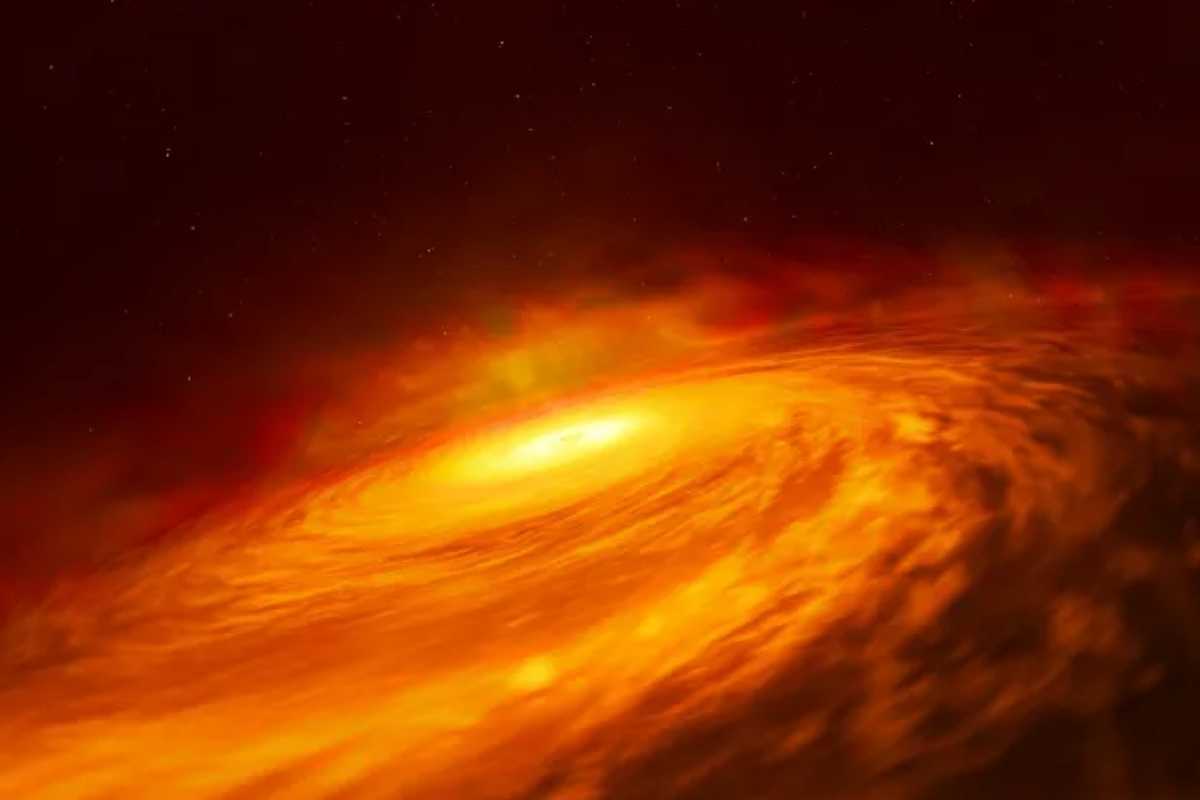Astronomy Black Hole Sound: Heard The Weird Sound Of Black Holes Revealed By NASA
Sounds from the Perseus galaxy cluster were re-created by multiplying their original pitch by seven piano-length octaves to achieve this higher tone. SYSTEM Sounds by NASA/CXC/SAO/K.Arcand
A black hole’s scream can’t be heard from outer space, but it can sing, according to new research.

NASA’s Chandra X-ray Observatory identified ripples in the galaxy cluster in the constellation Perseus in 2003, astrophysicists working with NASA’s orbiting spacecraft reported. 30,000 light-years across and radiating outward through the thin, ultra-hot gas that suffuses galaxy clusters, these pressure waves were sound waves. Black holes in the center of the cluster, which is 250 million light-years away and comprises millions of galaxies, are responsible for the explosions.
Read More
- Who is Brandon Blackstock? Kelly Clarkson’s Ex-Husband: The Whole Story
- LATEST News: Clayton Kershaw Net Worth 2022
With an oscillation period of 10 million years, the sound waves are acoustically comparable to a B-flat 57 octaves below middle C, which the black hole has reportedly been retaining for the past two billion years. To keep the cluster’s gas from condensing, astronomers believe that these waves act a stifle star production.
For the first time, astronomers have “sonified” these ripples by increasing their frequency by quadrillions of times, making them audible to humans. Now the rest of us can hear the sound of the intergalactic sirens singing in the distance.
The sound of a black hole … #astronomy #blackhole pic.twitter.com/ZTTLFa8Gol
— Patty Olvera
(@PattyOrion) May 6, 2022
Listening to the Perseus black hole through these new cosmic headphones, this listener was reminded of the galumphing tones on Jodie Foster’s headphones in the science fiction film “Contact,” which signify an alien radio communication.
As part of an attempt to “sonify” the universe, NASA has also released audio of the brilliant knots in a jet of energy spewing from a massive black hole at the heart of the galaxy known as M87. The orchestral tones reverberate across 53.5 million light-years in a steady progression.
MIT astronomer Erin Kara is leading a new sonification effort to study the environment around black holes using X-ray burst light echoes, similar to how bats utilize sound to hunt mosquitoes and other insects.
NASA’s annual “Black Hole Week,” which ran from May 2-6 this year, spawned all of this. Researchers with the Event Horizon Telescope, which in 2019 provided the first black hole image, are expected to announce their latest findings on May 12.
As defined by Einstein’s general theory of relativity, black holes are objects from which neither light nor sound can escape due to their extreme gravitational pull. On the other hand, paradoxically, they have the potential to be the most brilliant objects in the cosmos. Theorists believe that any matter that enters a black hole would be propelled to near-light speeds and heated, whirling, to millions of degrees by the hole’s gravitational field. X-ray bursts, interstellar shock waves, and high-energy jets and particles would be squirted out of the device, which would then travel through space like toothpaste.
For example, a black hole may exist in conjunction with another star in a system, stealing material from the star and accumulating it into a dense, luminous disc that occasionally emits X-rays.
A team led by Jingyi Wang, an M.I.T. graduate student, used data from NASA’s Neutron Star Interior Composition Explorer (NICER) to look for echoes or reflections of these X-ray bursts. When the original X-ray blast was followed by a distorted echo and distortion due to the strange gravity of black holes, researchers were able to get insight into the genesis of these explosive bursts.
Read More
- First Partial Solar Eclipse of 2022: Where Is It And How to Watch It?
- MrBeast Net Worth, Career Highlights & Everything We Know
The X-ray reflections are being converted into audible sounds by Dr. Kara, who is wo\
rking alongside music and education professionals. It was found that, in some models, the light flashes go all the way around the black hole, producing an audible shift in wavelengths before being reflected.
Guys stay tuned to us for the latest updates and if you like the above statement by NASA please drop a comment below and visit, Green Energy Analysis.


